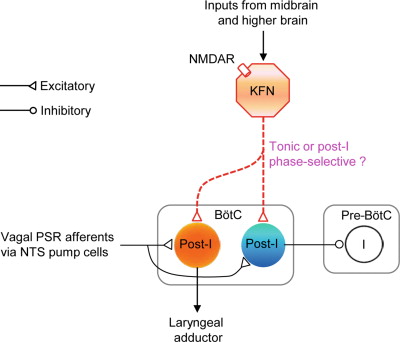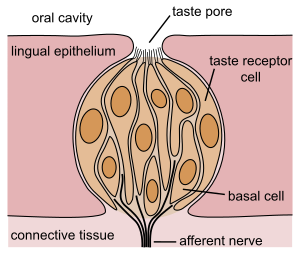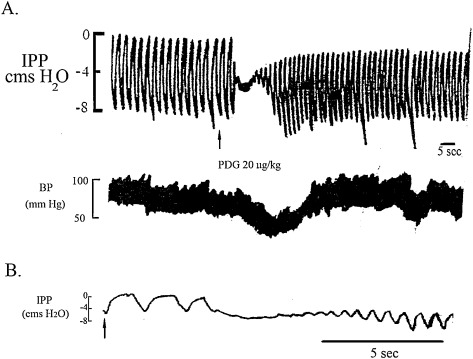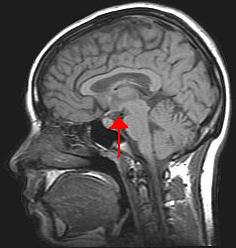Introduction
Respiration is a vital physiological process that ensures the delivery of oxygen to tissues and the removal of carbon dioxide from the body. The regulation of respiration is a complex and finely tuned process that involves multiple systems, including the central nervous system, chemoreceptors, and mechanoreceptors. This intricate regulation ensures that the respiratory rate and depth are appropriately adjusted to meet the metabolic demands of the body under various conditions, such as rest, exercise, and sleep.
Central Control of Respiration
The primary control center for respiration is located in the brainstem, specifically within the medulla oblongata and the pons. These regions contain groups of neurons that generate the rhythmic pattern of breathing.
Medullary Respiratory Centers: The medulla oblongata houses the dorsal respiratory group (DRG) and the ventral respiratory group (VRG). The DRG primarily controls the basic rhythm of respiration by sending signals to the diaphragm and intercostal muscles to initiate inspiration. The VRG, on the other hand, is involved in both inspiration and expiration, especially during forced breathin g.
Pontine Respiratory Centers: The pons contains the pneumotaxic center and the apneustic center. The pneumotaxic center modulates the activity of the DRG and VRG, helping to smooth the transition between inspiration and expiration. The apneustic center promotes deep, prolonged inspirations by stimulating the DRG

Chemoreceptor Regulation
Chemoreceptors play a crucial role in detecting changes in blood levels of carbon dioxide (CO2), oxygen (O2), and hydrogen ions (H+), and subsequently adjusting the respiratory rate and depth.

Central Chemoreceptors: Located in the medulla oblongata, central chemoreceptors are primarily sensitive to changes in the pH of the cerebrospinal fluid (CSF), which reflects the CO2 levels in the blood. An increase in CO2 results in a decrease in pH, which stimulates the central chemoreceptors to increase the rate and depth of respiration to expel more CO2 and restore pH balance.
Peripheral Chemoreceptors: Found in the carotid bodies and aortic bodies, peripheral chemoreceptors are sensitive to changes in blood O2, CO2, and pH levels. A significant drop in O2 or a rise in CO2 and H+ levels activates these receptors, sending signals to the respiratory centers to enhance breathing.

Mechanoreceptor Regulation
Mechanoreceptors located in the lungs and respiratory muscles provide feedback on the mechanical aspects of breathing.
Pulmonary Stretch Receptors: These receptors, found in the smooth muscles of the airways, are activated by lung inflation. When the lungs expand excessively, stretch receptors send inhibitory signals to the medullary respiratory centers via the vagus nerve, resulting in the termination of inspiration. This reflex, known as the Hering-Breuer reflex, helps prevent over-inflation of the lungs.
Irritant Receptors: Located in the epithelial lining of the airways, irritant receptors respond to noxious stimuli such as smoke, dust, and cold air. Activation of these receptors triggers protective reflexes like coughing, sneezing, and bronchoconstriction to remove the irritants from the airways.
J Receptors: Juxtapulmonary-capillary receptors, or J receptors, are found in the alveolar walls close to the capillaries. They respond to pulmonary congestion and edema, sending signals to increase the respiratory rate and depth

Higher Brain Centers
Apart from the brainstem, higher brain centers such as the cerebral cortex and hypothalamus also influence respiration.

Voluntary Control: The cerebral cortex allows for voluntary control of breathing, enabling activities like speaking, singing, and breath-holding. However, voluntary control is limited and can be overridden by the automatic respiratory centers if blood gas levels become critically abnormal.
Emotional and Behavioral Responses: The hypothalamus and limbic system can affect breathing patterns in response to emotions such as fear, anxiety, and excitement. For instance, anxiety can lead to hyperventilation, while a relaxed state may promote slow, deep breathing
Reflexes and Respiratory Adjustments
Several reflexes and physiological adjustments ensure that respiration meets the body’s needs under different conditions.
Exercise: During physical activity, the respiratory rate and depth increase significantly to match the elevated metabolic demands. This adjustment is mediated by a combination of neural and chemical signals, including proprioceptive input from muscles and joints, increased CO2 production, and decreased O2 levels.
Sleep: Respiration undergoes characteristic changes during different stages of sleep. In non-rapid eye movement (NREM) sleep, breathing becomes slower and more regular, while in rapid eye movement (REM) sleep, respiration is irregular and may include periods of apnea. These changes are primarily regulated by the brainstem and are influenced by the sleep cycle
Altitude: At high altitudes, the reduced atmospheric pressure results in lower O2 availability. The body responds by increasing the respiratory rate and depth to enhance O2 uptake. Over time, acclimatization occurs, involving physiological adaptations such as increased red blood cell production and enhanced oxygen-carrying capacity.
Conclusion
The regulation of respiration is a dynamic and multifaceted process that ensures the maintenance of homeostasis in response to varying internal and external conditions. By integrating signals from central and peripheral chemoreceptors, mechanoreceptors, higher brain centers, and reflex pathways, the respiratory system effectively adjusts breathing patterns to meet the metabolic demands of the body. Understanding this complex regulatory network provides insights into the physiological basis of respiration and its adaptations to different states and challenges
The primary control center for respiration is located in the brainstem, specifically in the medulla oblongata and the pons. These areas contain groups of neurons that generate and regulate the rhythmic pattern of breathing.
Central chemoreceptors, located in the medulla oblongata, detect changes in the pH of cerebrospinal fluid (CSF), which reflects the levels of carbon dioxide (CO2) in the blood. An increase in CO2 leads to a decrease in pH, stimulating the central chemoreceptors to increase the rate and depth of respiration to expel more CO2 and restore pH balance.
Peripheral chemoreceptors are found in the carotid bodies and aortic bodies. They respond to changes in blood oxygen (O2), carbon dioxide (CO2), and hydrogen ion (H+) levels. A significant drop in O2 or an increase in CO2 and H+ levels activates these receptors, sending signals to the respiratory centers to enhance breathing.
Pulmonary stretch receptors are located in the smooth muscles of the airways and are activated by lung inflation. When the lungs expand excessively, these receptors send inhibitory signals to the medullary respiratory centers via the vagus nerve, leading to the termination of inspiration. This reflex, known as the Hering-Breuer reflex, helps prevent over-inflation of the lungs.
Yes, the cerebral cortex allows for voluntary control of breathing, enabling activities such as speaking, singing, and breath-holding. However, voluntary control is limited and can be overridden by the automatic respiratory centers if blood gas levels become critically abnormal.
Respiration undergoes characteristic changes during different stages of sleep. In non-rapid eye movement (NREM) sleep, breathing becomes slower and more regular, while in rapid eye movement (REM) sleep, respiration is irregular and may include periods of apnea. These changes are primarily regulated by the brainstem and are influenced by the sleep cycle.
At high altitudes, the reduced atmospheric pressure results in lower O2 availability. The body responds by increasing the respiratory rate and depth to enhance O2 uptake. Over time, acclimatization occurs, involving physiological adaptations such as increased red blood cell production and enhanced oxygen-carrying capacity.
Juxtapulmonary-capillary receptors, or J receptors, are located in the alveolar walls close to the capillaries. They respond to pulmonary congestion and edema, sending signals to increase the respiratory rate and depth.
Irritant receptors are found in the epithelial lining of the airways and respond to noxious stimuli such as smoke, dust, and cold air. Activation of these receptors triggers protective reflexes like coughing, sneezing, and bronchoconstriction to remove the irritants from the airways.
The pontine respiratory center, which includes the pneumotaxic center and the apneustic center, modulates the activity of the medullary respiratory centers. The pneumotaxic center helps smooth the transition between inspiration and expiration, while the apneustic center promotes deep, prolonged inspirations by stimulating the DRG.